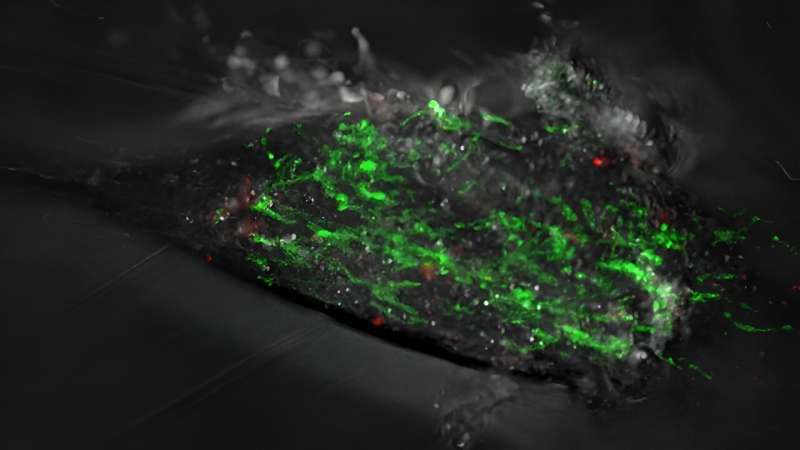This article has been reviewed according to Science X's editorial process and policies. Editors have highlighted the following attributes while ensuring the content's credibility:
fact-checked
peer-reviewed publication
trusted source
proofread
Mitochondrial DNA fragment losses predict Parkinson's disease before symptoms appear

The survival of neurons, unlike most other cells in the body, depends largely on the energy provided by mitochondria, intracellular organelles that contain their DNA to function properly.
The presence of mitochondrial DNA with deletions—the loss of fragments of DNA sequence—in cerebrospinal fluid could be an early marker of severe brain disease and an initial link in the whole neurodegenerative process, leading to the motor and cognitive symptoms associated with these disorders.
This is one of the main conclusions of the article published in the journal eBioMedicine.
The team was led by Álex Iranzo, professor at the Faculty of Medicine and Health Sciences of the University of Barcelona and director of the UB-AdSalutem Chair on Sleep and its Disorders, head of the Neurology Service of the Hospital Clinic of Barcelona, and of the clinical neurophysiology research group of the August Pi i Sunyer Biomedical Research Institute (IDIBAPS), and Ramon Trullàs, researcher of the Spanish National Research Council at the Barcelona Biomedical Research Institute (IIBB-CSIC); both linked to the Center for Biomedical Research Network in Neurodegenerative Diseases (CIBERNED).
The first author of the study is the researcher Margalida Puigròs, a member of the Institute of Neurosciences of the UB (UBneuro), the IIBB-CSIC and CIBERNED.
An alteration in the deepest sleep phase
As part of the study, the team studied a cohort of patients with a sleep behavior disorder that occurs during the REM (Rapid Eye Movement) phase, known as iRBD (idiopathic rem sleep behavior disorder). It is a disorder consisting of a disturbance of the deep sleep phase, characterized by a lack of muscle relaxation and the execution of abrupt and violent movements of the limbs and trunk, which are associated with aggressive dreams.
Over the years, many patients with iRBD go on to develop Parkinson's disease or Lewy body dementia, which is why it is thought to be an early stage of these conditions. In both cases, abnormal round protein deposits—Lewy bodies—form in the brain and are associated with neuronal death.
A previous mechanism to Parkinson's symptoms
In collaboration with the Sleep Disorders Unit of the Hospital Clinic of Barcelona, the team analyzed samples from 71 patients. As a result, a total of 34 patients diagnosed with REM sleep behavior disorder developed Parkinson's or Lewy body dementia years later; 17 were diagnosed with REM sleep behavior disorder but did not suffer from any disease, while 20 formed a control group without sleep behavior disorder or Parkinsonism.
"We have found that patients with REM sleep behavior disorder have higher levels of mitochondrial DNA with deletions compared to the control group," says Trullàs, CSIC research professor and leader of the molecular mechanisms of neurodegeneration group at CIBERNED.
Margalida Puigròs says that "patients with REM sleep behavior disorder, both those who subsequently developed Parkinson's disease and those who did not, had more mitochondrial DNA circulating in the cerebrospinal fluid with deletions—that is, with losses of some fragment of genetic material—than the control group.
"However, the most relevant finding is that we have observed that the amount of DNA with deletions is related to the time it takes for patients with sleep behavior disorder to manifest clinical symptoms of Parkinson's disease."
This suggests that mitochondrial DNA dysfunction is a primary molecular mechanism of the pathophysiological cascade that precedes the full clinical motor and cognitive manifestation of Parkinson's disease.
More information: Margalida Puigròs et al, Mitochondrial DNA deletions in the cerebrospinal fluid of patients with idiopathic REM sleep behaviour disorder, eBioMedicine (2024). DOI: 10.1016/j.ebiom.2024.105065




















